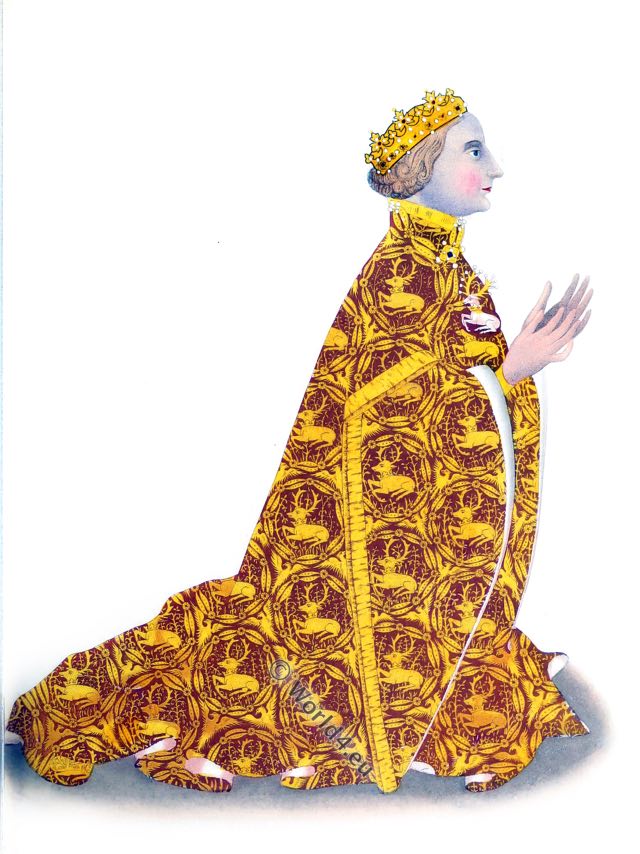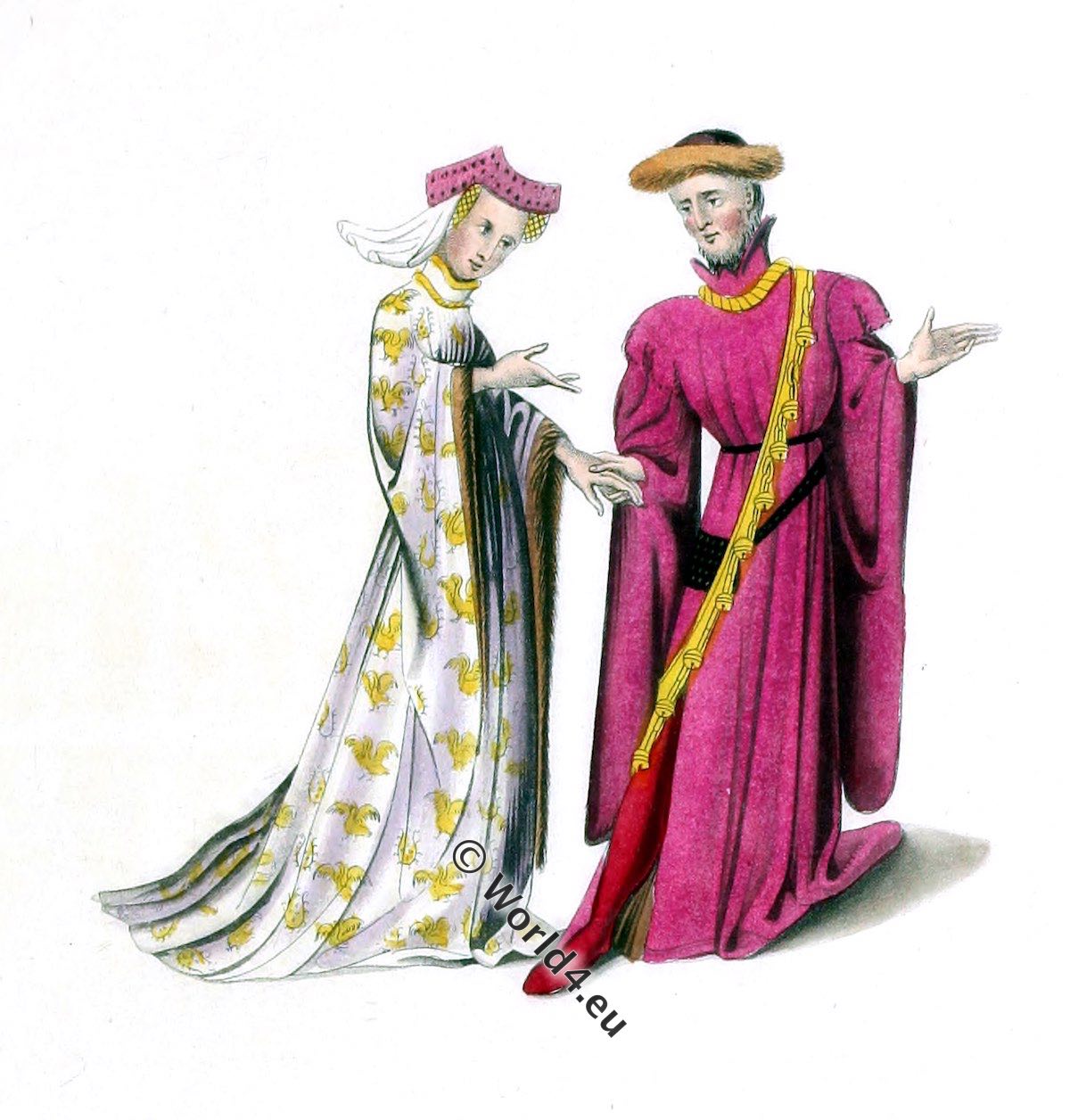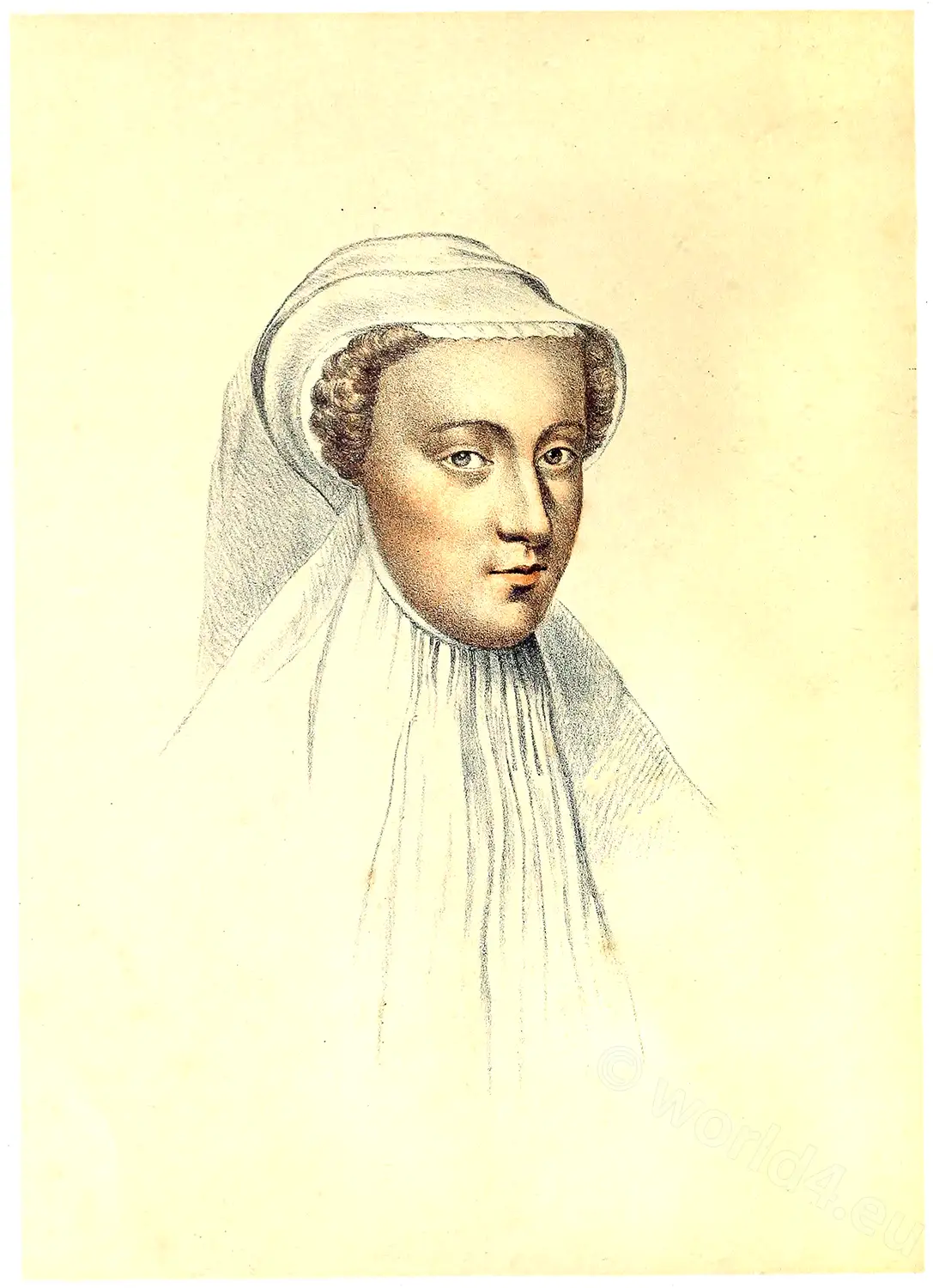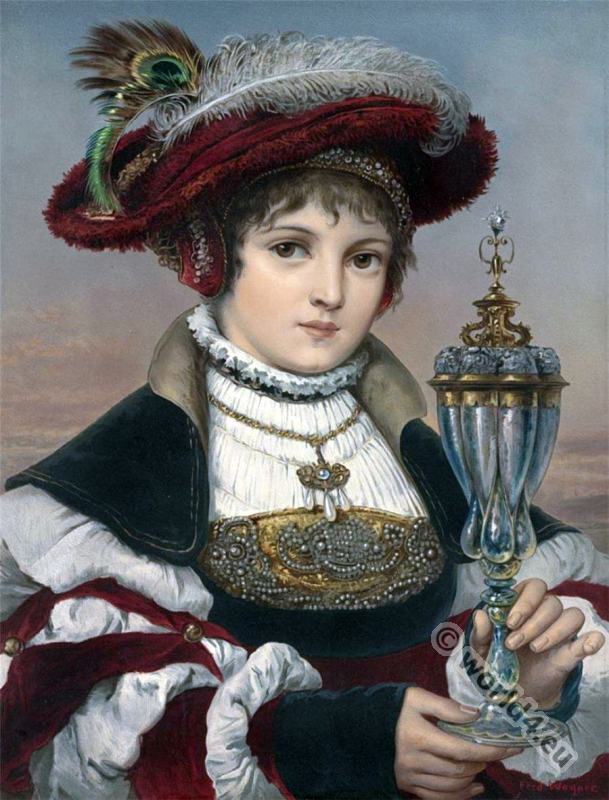Tannhäuser. Elizabeth, the Landgravine.
ELIZABETH is kneeling at the shrine in prayer for Tannhäuser, when she hears the chorus of the band of returning pilgrims, of whom he was one.
Chorus of Pilgrims.
Once more, with joy, my home, I meet thee;
Once more, fair flowery meadows, I greet ye;
My pilgrim’s staff henceforth may rest.
Since Heaven’s sweet peace is within my breast.
The sinner’s plaint on high was heard,
Accepted by a gracious Lord;
The tears I laid before his shrine
Are turned to hope and joy divine;
O Lord, eternal praise he thine!
Elizabeth (with great solemnity).
Oh, blessed Virgin, hear my prayer!
Thou Star of glory, look on me!
Here in the dust I bend before thee;
Now from this earth, oh! set me free.
Let me, a maiden pure and white,
Enter into thy kingdom bright.-
If vain desires and earthly longing
Have turned my heart from thee away,
The sinful hopes within me thronging
Before thy blessed feet I lay.
Wagner’s “Tannhauser.” Theodor Pixis, Artist. Claudius, Engraver.
Tannhäuser is a romantic opera in three acts by Richard Wagner (1813-1883, German composer), which is based on the traditional folk ballad Tannhäuser and the Competition of singers on the Wartburg castle to Thuringia. The opera deals with the dichotomy between sacred and profane love and redemption through love. The premiere took place on October 19, 1845 held at the Royal Court Theatre Dresden.
From the book: Character sketches of romance, fiction and the drama by Rev. Ebenezer Cobham Brewer, 1892. A revised American edition of the readers handbook. Edited by Marion Harland. Free eBook, Amazon.
Associated to Costumes design for The Ring Cycle by Richard Wagner.
Discover more from World4 Costume Culture History
Subscribe to get the latest posts sent to your email.







